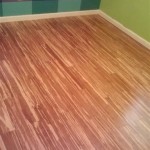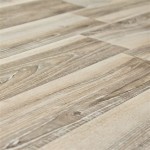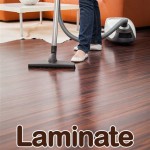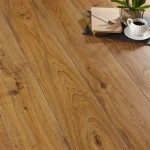Linoleum Flooring: A Comprehensive Guide to Its Benefits and Installation
Linoleum flooring has gained popularity as a versatile and durable option for residential and commercial spaces. This eco-friendly material offers numerous advantages, making it a preferred choice for homeowners and contractors alike.
Benefits of Linoleum Flooring
Durability and Longevity: Linoleum is renowned for its exceptional durability and can withstand heavy foot traffic and daily wear. Its robust construction ensures that it retains its appearance and functionality for decades.
Water Resistance: Linoleum is highly water-resistant, making it an ideal choice for kitchens, bathrooms, and entryways. Its non-porous surface prevents moisture penetration, reducing the risk of water damage.
Environmental Friendliness: Unlike many synthetic floorings, linoleum is made from natural materials such as linseed oil, wood flour, and limestone. It is recyclable and biodegradable, contributing to a sustainable home.
Hygienic and Antibacterial: Linoleum's smooth, non-porous surface prevents the accumulation of dirt and bacteria. Its natural antimicrobial properties enhance hygiene and create a healthier indoor environment.
Versatility and Customization: Linoleum comes in a wide range of colors, patterns, and designs. This versatility allows homeowners to customize their spaces and create unique and stylish floors.
Linoleum Flooring Installation
Installing linoleum flooring involves several steps that require careful planning and precision:
Subfloor Preparation: The subfloor must be level, dry, and smooth to ensure a proper installation. Any imperfections or moisture issues should be addressed before laying the linoleum.
Adhesive Application: A special adhesive specifically designed for linoleum flooring is applied to the subfloor using a trowel. This adhesive creates a strong bond between the linoleum and the subfloor.
Linoleum Placement: The linoleum sheets are carefully placed onto the adhesive-covered subfloor and smoothed out using a roller or trowel. It is essential to ensure proper alignment and avoid air bubbles.
Seaming: If the linoleum exceeds the size of the room, seams are created by welding the edges of the sheets together. Specialized welding equipment and techniques are used to achieve seamless transitions.
Finishing: Once the linoleum is installed, it is sealed and finished to protect its surface and enhance its durability. A topcoat or wax is applied to prevent wear and maintain its appearance.
By following these installation guidelines and using high-quality linoleum, homeowners can achieve a beautiful and long-lasting floor that meets their unique needs and expectations.

Types Of Vinyl Flooring The Home Depot
Corelogic 7 X 48 Waterproof Looselay Vinyl Plank Flooring Home Hardware

Vinyl Flooring The Home Depot

Trafficmaster Modular Natural Slate Stone 10 Mil X 12 Ft W Cut To Length Waterproof Vinyl Sheet Flooring U3130 258c938p144 The Home Depot
Vinyl Flooring Home Hardware

Trafficmaster Scorched Walnut Grey Wood 10 Mil X 12 Ft W Cut To Length Waterproof Vinyl Sheet Flooring C9450407c895p14 The Home Depot
Press Go Expresso Vinyl Plank Flooring Home Hardware
Press Go Expresso Vinyl Plank Flooring Home Hardware
Vinyl Flooring Home Hardware

Vinyl Flooring Home Hardware
Related Posts








